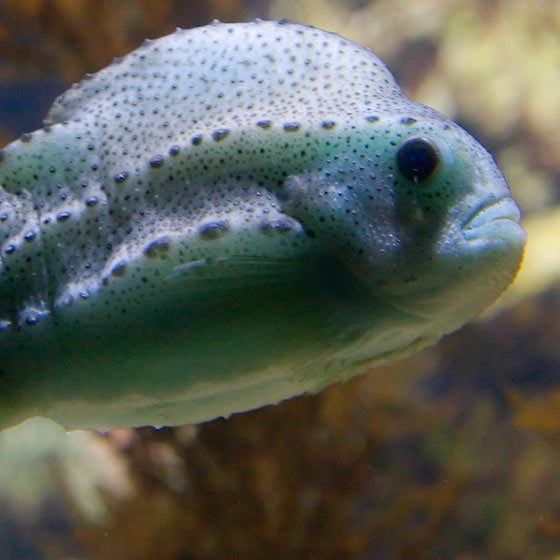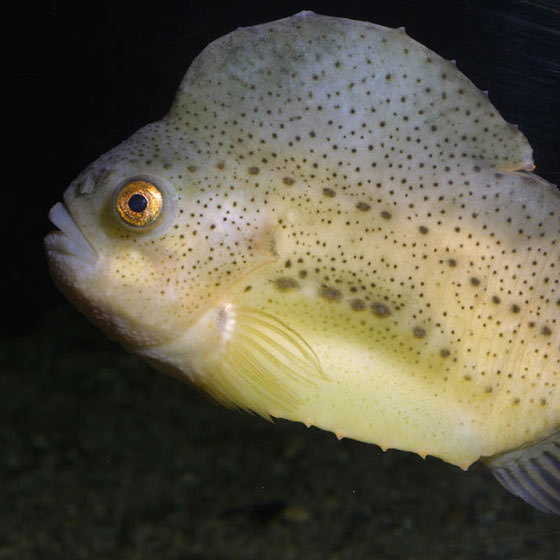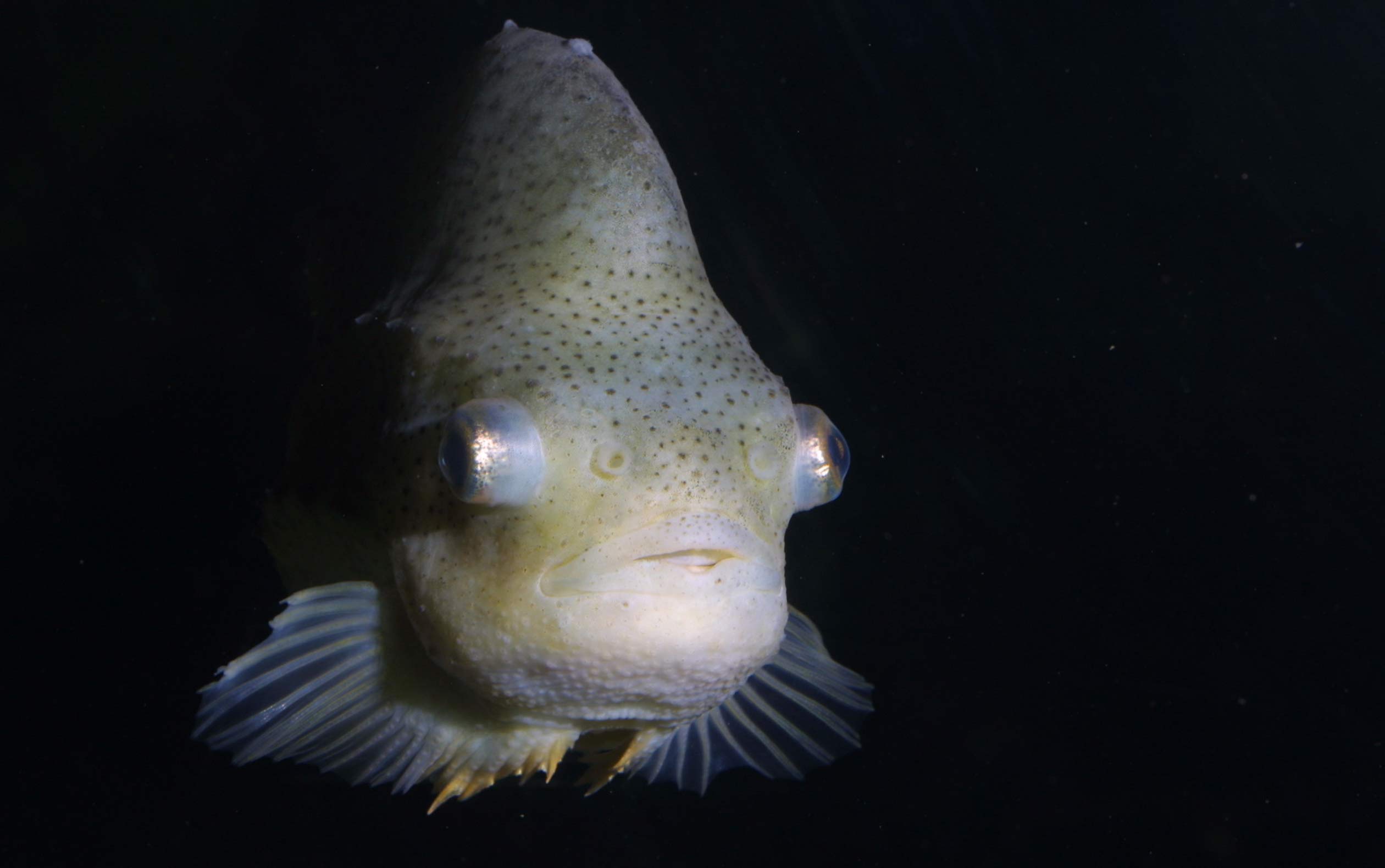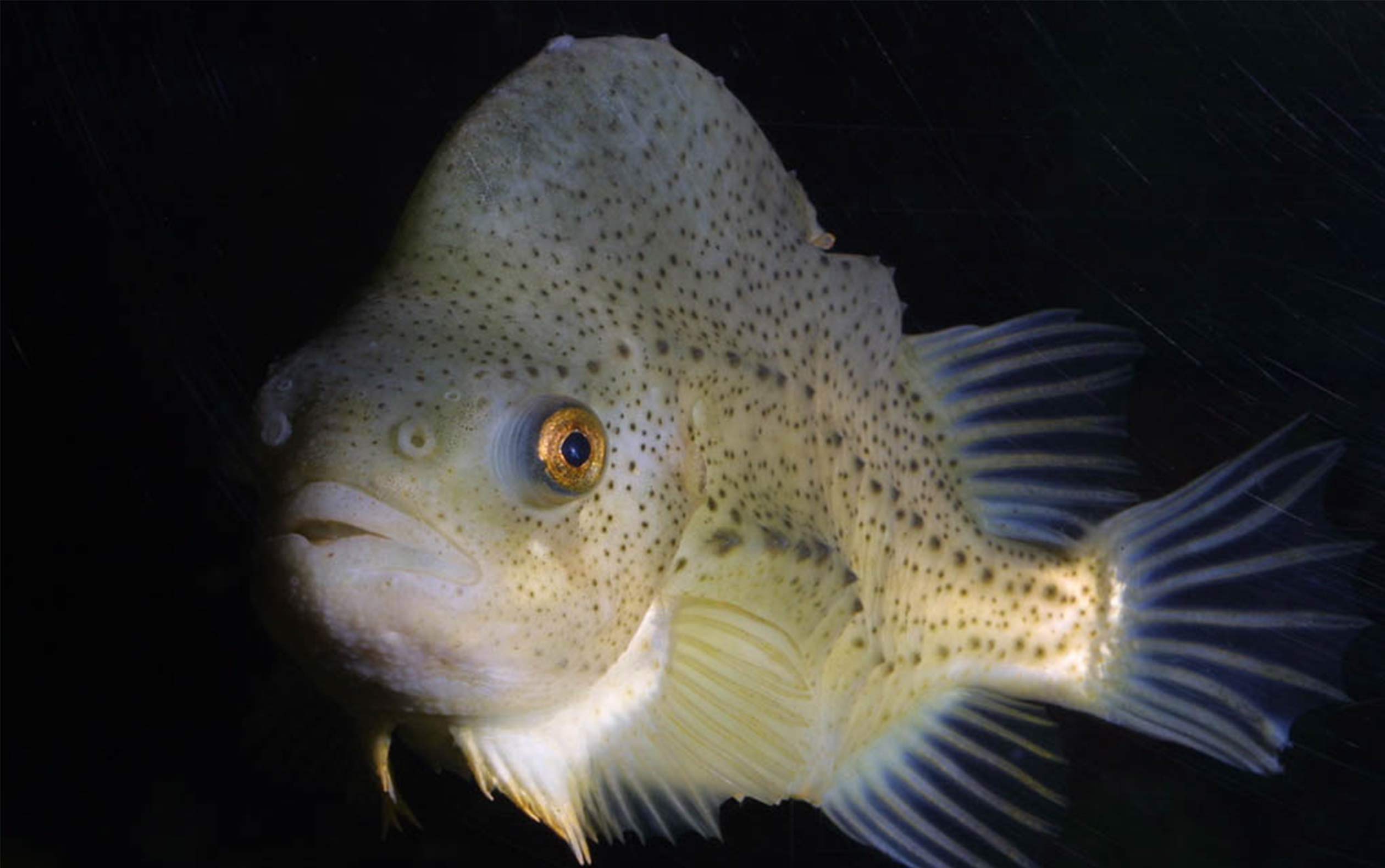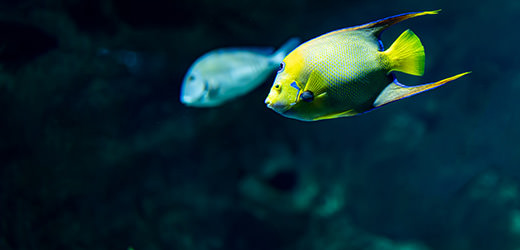Biology
The lumpfish has a stout body. Its dorsal fin thickens with age, eventually becoming a thick ridge. It has no scales. Instead, its body is covered with bony tubercles.
Lumpfish can grow to a maximum of 70 cm. Their pelvic fins have evolved into suckers so that they can attach themselves to rocks.
They usually live between 50 and 300 m underwater, but come to the surface and toward the shore during their mating period. At that time, their colouring becomes brighter.
